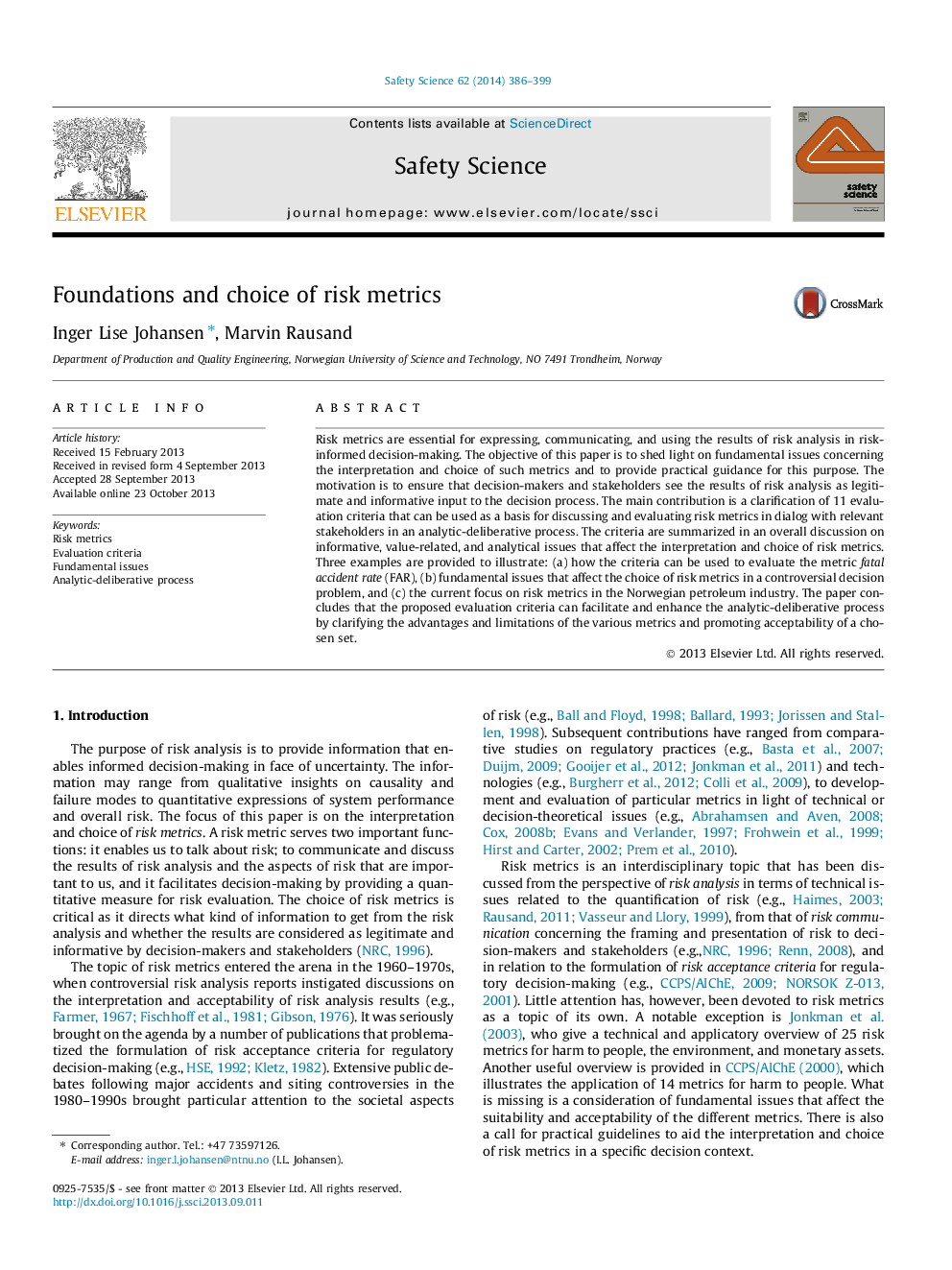| Article ID | Journal | Published Year | Pages | File Type |
|---|---|---|---|---|
| 589243 | Safety Science | 2014 | 14 Pages |
•Risk metrics are defined as instrumental definitions of risk.•11 criteria for evaluating risk metrics in a deliberative process are explained.•Informative, ethical, and analytic issues are discussed.•Three illustrative examples are provided.
Risk metrics are essential for expressing, communicating, and using the results of risk analysis in risk-informed decision-making. The objective of this paper is to shed light on fundamental issues concerning the interpretation and choice of such metrics and to provide practical guidance for this purpose. The motivation is to ensure that decision-makers and stakeholders see the results of risk analysis as legitimate and informative input to the decision process. The main contribution is a clarification of 11 evaluation criteria that can be used as a basis for discussing and evaluating risk metrics in dialog with relevant stakeholders in an analytic-deliberative process. The criteria are summarized in an overall discussion on informative, value-related, and analytical issues that affect the interpretation and choice of risk metrics. Three examples are provided to illustrate: (a) how the criteria can be used to evaluate the metric fatal accident rate (FAR), (b) fundamental issues that affect the choice of risk metrics in a controversial decision problem, and (c) the current focus on risk metrics in the Norwegian petroleum industry. The paper concludes that the proposed evaluation criteria can facilitate and enhance the analytic-deliberative process by clarifying the advantages and limitations of the various metrics and promoting acceptability of a chosen set.
